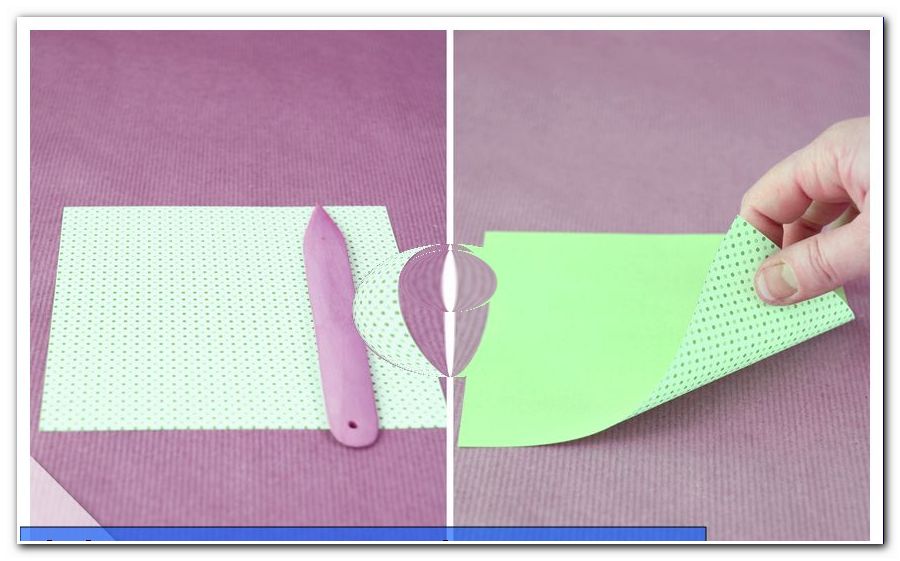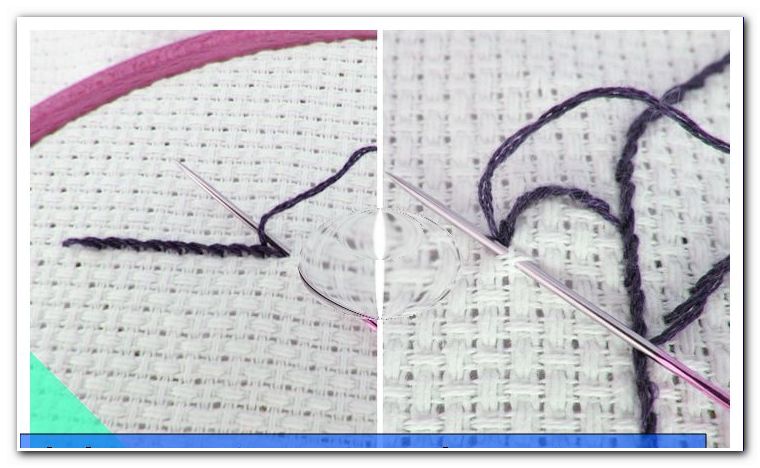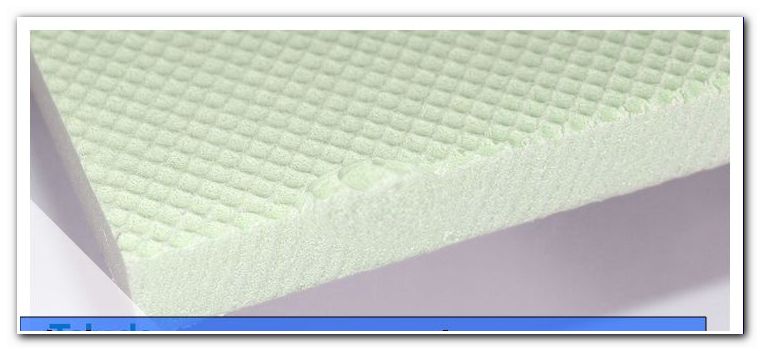Ficus ginseng - care instructions and avoid mistakes

- Ficus ginseng
- Care instructions as "Bonsai"
- Care instructions as "Ficus microcarpa"
- avoid errors
Ficus ginseng has conquered our plant trade and we can not pass it anymore. For bonsai friends a constant temptation, as well constantly disturbed by strange rumors, according to which the ficus ginseng "no real bonsai" was. The article explains about the ficus ginseng and the surprising possibilities of its care.
The Ficus ginseng is mainly sold in a form that does not really correspond to its true nature. Does not matter, even a Ficus ginseng in the currently typical sales form is a beautiful plant, where you z. B. practice bonsai care. The Ficus ginseng gives but even more, you can also pull it as a normal houseplant, for both follows the care instructions and notes below, to avoid mistakes.
Ficus ginseng

If you currently find a ficus ginseng somewhere, it is usually a tree with a knobby root that is pulled or at least sold as bonsai.
Ficus ginseng are sold in discounters and furniture stores for a few euros as bonsai, mostly in taste dubious ceramics; and also many bonsai dealers want to earn from them, after all, the Japanese word bonsai literally means "planting in the shell", so a bonsai is a tree in the pot.
When you enter Ficus Ginseng into a search engine, you get around 200, 000 entries that focus on how best to care, trim, and perhaps even wire this bonsai ficus ginseng.
The trade must know - the ficus ginseng is a bonsai ">
When one reads in bonsai ferre, one hardly discusses as much about another tree as about the ficus ginseng.
But Ficus is called fig, and figs are as ornamental or useful plants - from the good old rubber tree (Ficus elastica) over the good old birch fig (Ficus benjamina) to the real fig tree (Ficus carica) actually always quite tall and rather fast growing and so that not predestined for bonsai?
In the most complete international plant directory in the world, the Plant List created since 2010 by a collaboration between the Royal Botanic Gardens, Kew and the Missouri Botanical Garden, it has now reached well over 350, 000 identified plant species, but there is no Ficus ginseng not even among the almost 1, 300, 000 synonyms and unrecognized names.
The Plant List contains only species and no cultivars, and this is where the mystery lies. Sometimes ficus ginseng has a real name, Ficus microcarpa, the Chinese fig.
Respectively several real names, the Ficus microcarpa after first name Linnaeus is a subspecies of the Ficus retusa, other authors classify the retusa as a younger synonym.
 In German she says:
In German she says:
- Chinese fig or
- Laurel fig or
- Indian laurel
In English she says:
- Chinese Banyan
- Malayan Banyan
- Taiwan banyan
- Indian Laurel
- Curtain fig or
- Gajumaru
- retusa cuban laurel
Then it's back to Linnaeus and the microcarpa is a retusa variety, which is also called " Ficus retusa var. Nitida King " (again just one of 32 synonyms) or Banyan fig or GINSENG FEIGE hot ... bring air, full broadside fig-chaos, If you do not want to write a thesis on nomenclature in biology, buy this plant under any name.
Only one thing is certain, it is not a bonsai, but a mighty tree with stature heights of up to 30 meters (for comparison: 1, 000-year-old oak trees around 15 m), with trunk diameters of up to 50 cm and a broad tree crown.
In the furniture store there is also a "real" Ficus microcarpa, but only an almost real one of a mini-cultivar called 'Moclame'.
The story of Ficus ginseng
One of the first sightings of the houseplant guru (www.thehouseplantguru.com/tag/ficus-microcarpa-moclame) was on 3.8.2014 on a commercial show of the green plants industry in Columbus, OH, USA.
Blumenbüro Holland, the marketing and communication specialists of the producers for "FloraHolland", introduced Ficus Ginseng to us and made it the Houseplant of the Month in July 2015, of course in the shrunken versions, which you should also do with a tree in the living room that wants to be almost twice as high as an oak ">
The one shrink version, the bonsai, has been around for a long time. The Ficus microcarpa tends to form aerial roots and has been cultivated in China and Malaysia for centuries as a special root bonsai; ginseng is Chinese for "root." After years of patient care, the most bizarre root stump is formed, onto which a tiny, small-leaved ficus is grafted.
The Dutch producers import bulbous aerial roots, which were artificially grown, cut and planted in pots in Taiwan on large farms (rather than years of cultivation). Then it waits until a few shoots form around the interface, and the impostor, which looks like a bonsai to (short-sighted) laymen, is done.
How long the Dutch producers take time to "continue the culture to the point of sale" (quote press text www.blumenbuero.de/kampagne/juli-2015-ficus-ginseng-ist-die-zimmerpflanze-des-monats), we may only guess, with prices between 5, - and 10, - € but certainly not too long.
If you buy a Ficus ginseng with a shaped root, you buy the aerial roots of a normal fig tree with a few leaves (own leaves, but also grafted ficus ginseng should already have been sighted).

Apart from the not quite real bonsai-promise behind it, this is not a bad thing, figs are great plants, and with a Ficus retusa microcarpa you have at least several possibilities of culture.
Care instructions as "Bonsai"
They have bought a bonsai and now want to cultivate a bonsai "> 
These are the special features of bonsai care of a ficus ginseng:
- You will not be able to wire the already existing shoots for a very long time, shorter than in other species
- If the leaves are to remain small, the ficus must be VERY regularly pruned
- But it is so well cut compatible that you can simply cut away unexpected gigantism
- You can continue working on the trunk thickening
- Grow sprouts until the branch has desired thickness
- The leaves remain on it, with leaves and their photosynthesis, the branch thickens faster
- You can accelerate that by fertilizing
- You can even work the roots mechanically
- For example, hollow out or mill off part of the massive root, ie design "aerial roots"
- But only when the rest grows pretty strong
- You can wrap the thick roots in damp cloths and keep them permanently moist
- To subtropical conditions, warm and humid, in the discarded aquarium should form the most beautiful aerial roots
- The new rootstock from the trunk can then be shaped again at will
At some point, then the funny tuber is hardly noticeable.
- The cut on the aerial roots is usually ugly
- You can bark one or more branches to the new tree top and let them grow to cover the cut
- So enlarge and educate the crown that it conceals the interface someday
- Because of a certain braking effect on the growth power, a ficus ginseng should not be kept in potting soil, but in bonsai substrate
- With regard to the vigor, you should always grow new shoots first
- cut back hard after a while
- The basic care depends on the needs of a normal Ficus microcarpa
- Room temperature, between 17 and 25 degrees
- A summer stay outdoors is also good for a ficus ginseng
- Also "bonsai-technical", the leaves are usually smaller in direct sunlight than in space
- If you win cuttings when pruning, bring good bonsai talent with you
However, according to bonsai experts, there are more worthwhile trees if you want to make bonsai, unless you enjoy experimenting.

The maxi bonsai has it all
The figs known to us as weird dried fruit are far from being as harmless as they are.
Several ficus species are known as "strangler figs" . Their seeds are eaten by birds and excreted on branches, where they stick with their slimy seed coat and germinate. First, they grow quite good as epiphytes ("Aufsitzer") on the host plants, while the aerial roots (!) Extend to the ground. Once rooted in the ground, growth and aerial rooting really do start, the host will grow and eventually die. If it was "digested" by the strangler fig (it absorbs the nutrients released by its decomposition).
Which figs have exactly the "talent for strangling" has not yet been researched in detail. But figs that like Ficus microcarpa like to form aerial roots, are from the outset in suspicion and the sometimes as Ficus ginseng classified Banyan fig ( Ficus benghalensis ) is definitely there ...
When the aerial roots meet as they grow around a host plant, they grow together. This "urge to unite" should be inherent in all plant parts of a strangler fig: roots, trunks and branches grow together when they touch (under pressure). This can lead to obscure structures.
Another way in which the figs are "not as harmless as they do" is of interest to people who are allergic to fast. Among the phytochemicals in the ficus are several irritant substances (more on this can be found in the article on Ficus benjamina, our popular birch fig).
In any case, you should quickly find a grateful customer, if in the company of your new plant somehow funny or your skin shows any reactions. And when cutting and protecting the carpet, the sap dries to disgusting stains .
Care instructions as " Ficus microcarpa"
All of the true details of Ficus ginseng discussed in detail above have not been so extensively discussed, but help them understand that you can treat this Ficus ginseng microcarpa quite differently.
As I said, the Ficus Ginseng is in its core a normal Chinese fig, and if you are not constantly behind with the scissors, this fig will anyway in some cases "ausüxen".

You can allow, promote, use, and grow your Chinese fig into a big ficus. The maintained like any Ficus:
- Quite normal, often quite nutrient-rich soil, (possibly stretched with some sand for better drainage effect)
- Location
- As much light as possible, a ficus ginseng comes from tropical regions and is used to 12 hours of daylight
- Bright location where the ficus is not exposed to direct sunlight or drafts
- Room temperatures (everything between 18 and 22 degrees) are right
- In summer Ficus Ginseng likes to be outside
- Gently get used to full sun, even plants get sunburn
- From an average temperature of 15 ° C (even at night), the ficus ginseng can reach the balcony
- If it grows fast, repotting it once a year (best in spring, it's set for growth anyway and quickly forms new roots)
- Pouring, fertilizing
- When water is careful: Too much rotten roots, too little leads to leaf shedding
- It is best to pour it when the topmost layer of earth has just dried slightly
- If the water is hard on you, with collected rainwater or tap water that was allowed to stand out a bit
- Spraying with lime-free water is always good
- (Liquid) fertilizer is available during the growing season, approximately every two weeks according to the package instructions
- You can cut, but not necessarily
- If you have enough space, you can also grow the ficus easily, the cultivars are up to 2 m high
- Auslichten, shorten, shapes is of course uncritically possible, the Ficus can also cut back into the old wood
avoid errors
You can not actually make that many mistakes with a Ficus. Often the supposed care mistake is just nature:
- A ficus ginseng comes from the tropics, it receives daily many hours of sunlight
- Not with us, especially not in winter
- Also evergreen leaves do not live forever, and the superfluous / too old leaves are then dropped in winter halt
- Otherwise check: Leaf loss can also result from over-pouring, under-pouring or fertilization
- Or from cold (from below), drafts, too little soil in the pot (repot every 2, 3 years)
- Or pests, when the leaves show spots / spots, are usually spider mites or thrips access




